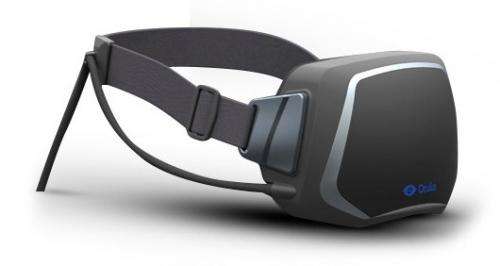Virtual reality offers promise and problems

In recent months, I've seen a Tyrannosaurus rex stomp right toward me in a museum hallway and got to experience being Stanford's quarterback.
But I felt something like a cyborg. And I also got a slight case of nausea and a throbbing headache that lasted more than a day.
Such is the state of virtual reality. The long-promised and now massively hyped technology is able to transport people into fantastical experiences they could not have imagined before. But the technology still has some practical problems that could - and in some cases should - give consumers pause.
"Every year when I talk to people in the field, they say, 'This is the year,'" said Tuong Nguyen, an analyst who covers personal technologies for research firm Gartner. "When I look at that statement compared to five years ago, it's so much more true now."
Designed to immerse people in a world other than their own, virtual reality systems are typically built around a head-mounted display and sensors that detect a user's physical movements and translate them into virtual ones. The headsets typically block out any outside light, forcing users to focus on what's being displayed on their screens, and display what amounts to a sphere of video. Just as in the real world, what a user sees depends on which direction she turns her head.
The systems can be used to play games and movies. They can also transport people to places they've never been - real and imaginary. And they can allow them to try on new bodies, genders or even species.
The concept of virtual reality has been around for decades. But thanks to pricey and immature technology, VR systems have never found mass appeal.
Some big companies are betting things are different now. Samsung and Google already have some relatively simple VR systems on the market. Meanwhile over the next year, Facebook, HTC and Sony will be releasing more sophisticated systems.
Backers say the technology is finally ready for consumers. Computers are now powerful enough to deliver images that are high enough in resolution to look real while refreshing them frequently enough to prevent the kind of stuttering video that can destroy the virtual effect. The cost of sensors and high-definition displays have dropped to the point that sophisticated VR headsets can potentially be sold for less than $1,000.
"All these technologies are maturing right now, making it possible to create a consumer-level device," said Rick Marks, who heads up the research group within Sony's PlayStation video game division.
Over the last six months, I've gotten to experience some of the new systems, including Facebook's Oculus Rift and the Vive, a system that smartphone maker HTC is developing in conjunction with online game company Valve. Last week, I also got to check out some of the work that's being done at Stanford's Virtual Human Interaction Lab, a cutting-edge VR facility.
I've been amazed at how engrossing and real the virtual environments feel. When I stepped off a virtual plank and plunged into a pit in one Stanford's VR experiences, I got butterflies in my stomach. When the whale swam past me while I was wearing the Vive, I remember stepping back so it wouldn't bump into me.
But as sophisticated as VR has become, it still may not be ready for prime time. The new systems are costly and complicated, requiring new equipment that will only work with specific devices. To use Oculus, for example, users will have to have a relatively new PC with a high-end graphic card, a setup that will likely costs $1,000 or more - without the headset.
The new VR systems are also unwieldy. The headsets are bulky and can feel heavy if you wear them for very long. And the more sophisticated systems - Vive, Project Morpheus and Oculus - will all require their headsets to be connected with a cable to a PC or game console. That cannot only limit your ability to move around, it may also put you on edge about unwittingly knocking things over in your house.
And as my experience with the Gear indicates, some of the systems can still make you sick.
VR still has "this nerd quality," said Tadhg Kelly, a game designer and industry consultant.
"The nerd obsessives will happily go for it," he said, adding, "But that's not everybody."
And virtual reality faces some other problems. Consumers generally need to see and experience a new technology before they will adopt it. That's not so easy to do with VR, because you can't just glance over someone's shoulder like you could with a smartphone. Instead, you'll have to try a headset on yourself, and for the time being, those are going to be hard to find.
There also appears to be a disconnect between the appropriate uses of virtual reality and how it's initially going to be marketed. The weight of the headsets and the proximity of the screens inside them to users' eyes make them uncomfortable to use for long periods of time. But many of the new systems are being pitched almost entirely for their use with the kinds of immersive video games that users often spend hours at a time playing.
To Jaron Lanier, who is widely considered to be the father of modern virtual reality, some of these shortcomings are unavoidable, at least at this stage in VR's evolution. The cables are necessary, because they offer a much better experience right now than wireless technologies. And each new medium tends to start off emulating those that came before it.
What he's impressed with is that virtual reality is starting to impress more people more consistently than ever before.
"I'm still not satisfied," Lanier said. "But I feel we are getting closer."
©2015 San Jose Mercury News
Distributed by Tribune Content Agency, LLC.




















